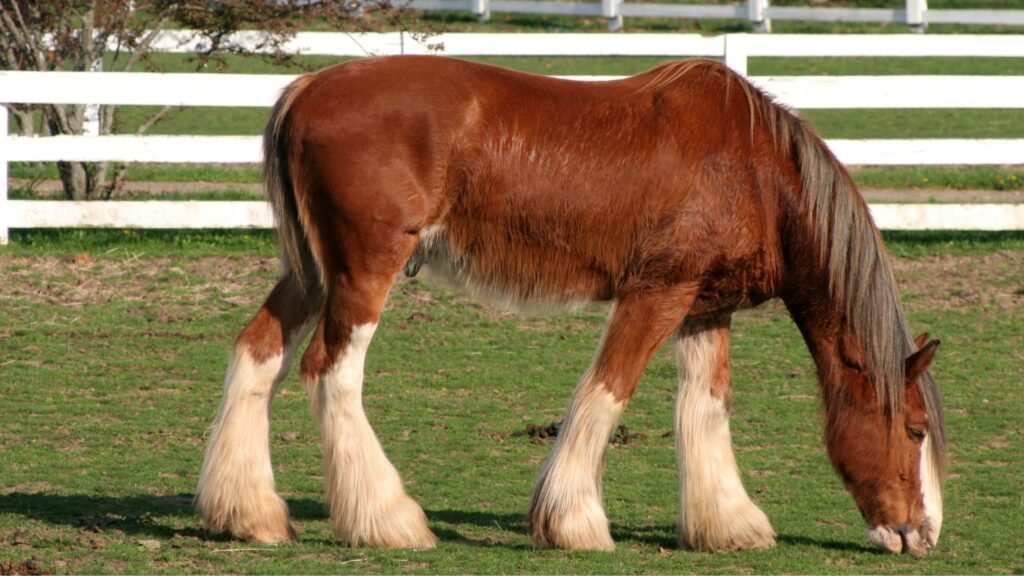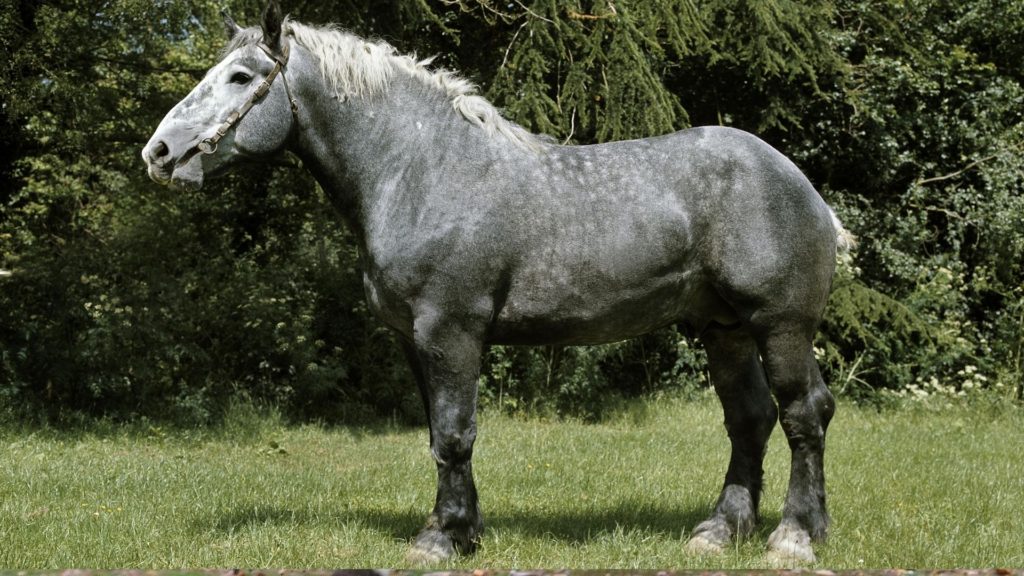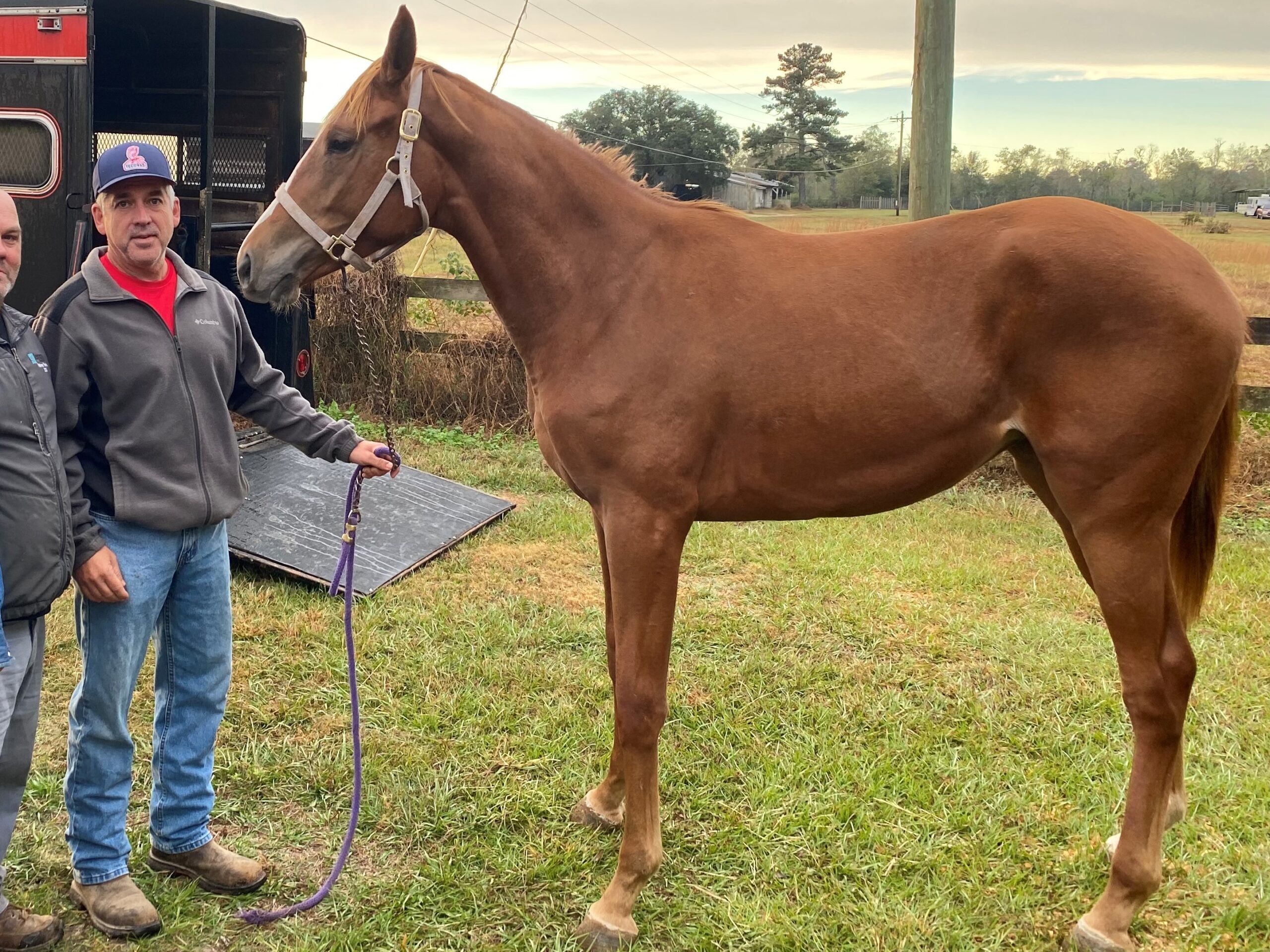Last updated: June 10, 2025
Did you know that the world’s largest horse, a Shire named Sampson, stood an astonishing 21.2 hands and weighed over 3,000 pounds? Over the years, I’ve had the privilege of working with many large horse breeds, each one remarkable for its size, strength, and unique story.
In this guide, we’ll explore the titans of the equine world—the Shire, Clydesdale, Percheron, Belgian Draft, and Suffolk Punch—diving into their impressive histories, characteristics, and the important efforts underway to protect these gentle giants for future generations.

What Is the Largest Horse Breed?
The Shire horse is widely considered the largest horse breed by height, with individuals regularly exceeding 19 hands. The heaviest horse on record was a Belgian Draft named Brooklyn Supreme, weighing over 3,200 pounds.
Understanding these breeds’ historical importance is a great start, but regular care, like adopting the best horse grooming practices, ensures they thrive in modern times. Now, let’s explore what makes these remarkable breeds stand out.

The Reigning Giants: Profiles of the Largest Horse Breeds
Each of these remarkable breeds boasts impressive size, strength, and a rich history. Let’s dive into the world of the Shire, Clydesdale, Percheron, Belgian Draft, and Suffolk Punch to learn what makes each of them a true gentle giant.
Shire Horse: Size, Temperament, and History of the Tallest Horse Breed

Hailing from the fertile fenlands of England, the Shire horse stands as a true testament to size and strength. Developed over centuries as a “great horse” capable of carrying heavily armored knights and later pulling substantial loads, the Shire embodies power tempered with a remarkably docile temperament.
- History and Origin: Tracing its roots back to the medieval “war horse,” the Shire evolved into a crucial workhorse for agriculture, transportation, and canal barge pulling in Great Britain. Their lineage includes breeds like the Friesian and the now-extinct Old English Black Horse.
- Physical Characteristics:
- Typical Height: Shires typically stand an impressive 17 to 19+ hands high (approximately 68-76 inches, 173-193 cm) at the withers, with some individuals exceeding this height.
- Typical Weight: These powerful horses generally weigh between 1,800 and 2,400 pounds (approximately 816-1089 kg), a testament to their robust build.
- Conformation: Shires possess a muscular and deep-chested physique, built for pulling. A distinctive feature is the abundant feathering of long, silky hair on their lower legs, adding to their majestic appearance.
- Common Colors: Common coat colors include bay, black, gray, and chestnut.
- Temperament: Despite their imposing size, Shires are known for their gentle, willing, and intelligent nature, earning them the moniker “gentle giants.”
- Modern Uses: Although their traditional roles have diminished with mechanization, Shires are now popular in showing, parades, forestry work (due to their low environmental impact), and as impressive leisure horses.
- Conservation Status: Sadly, the Shire breed has faced periods of decline. In the United States, the Livestock Conservancy lists them as “Recovering,” indicating a population that has increased but still requires monitoring. In the United Kingdom, the Rare Breeds Survival Trust classifies them as “Vulnerable,” highlighting the ongoing need for conservation efforts.
- Record Holder: The most famous Shire of all time was likely Sampson, also known as Mammoth. Foaled in 1846 in Bedfordshire, England, he stood an astounding 21.25 hands (approximately 86.5 inches, 219.7 cm) high and reportedly weighed over 3,000 pounds, truly earning his name.
Source for Further Reading: Shire Horse History by the Shire Horse Society).
Clydesdale Horse: Distinctive Feathering and History of the Scottish Heavy Horse

Originating from the Clyde Valley in Scotland, the Clydesdale is renowned for its striking appearance, characterized by its high-stepping gait and distinctive white feathering that flows around its large hooves. These horses were historically crucial for agriculture, coal hauling, and heavy transport.
- History and Origin: The Clydesdale breed was developed in the 18th century through the breeding of local mares with Flemish stallions. They quickly gained popularity for their strength, agility, and impressive presence.
- Physical Characteristics:
- Typical Height: Clydesdales typically stand between 16 and 18 hands high (approximately 64-72 inches, 163-183 cm).
- Typical Weight: Their weight generally ranges from 1,800 to 2,200 pounds (approximately 816-998 kg).
- Conformation: They possess a well-muscled build, though often appearing slightly more agile than the Shire. Their most distinguishing feature is the abundant white feathering on their lower legs, often accompanied by white markings on the face and legs.
- Common Colors: Bay is the most common color, but they can also be black, gray, and chestnut.
- Temperament: Clydesdales are known for their intelligent, willing, and gentle disposition, making them easy to handle and train.
- Modern Uses: Today, Clydesdales are highly visible in parades, draft horse shows, and as iconic symbols for various brands. They are also used for pleasure driving and some logging operations.
- Conservation Status: Similar to the Shire, the Clydesdale has faced population challenges. The Livestock Conservancy lists them as “Recovering” in the US, while the Rare Breeds Survival Trust in the UK classifies them as “Vulnerable.”
- Record Holder: While precise historical records are scarce, a Clydesdale named Poe gained significant attention for his exceptional height in recent times, standing close to 20.2 hands, showcasing the breed’s potential for impressive size.
Source for Further Reading: Clydesdale Horse Society Information.
Percheron Horse: Strength, Versatility, and History of the French Draft Horse

Originating in the Perche region of France, the Percheron is a breed celebrated for its power, intelligence, and versatility. Historically used as war horses, agricultural laborers, and for pulling carriages, they are known for their sturdy build and energetic nature.
- History and Origin: The Percheron’s history dates back to the Middle Ages, with influences from Arabian horses contributing to their refined yet powerful physique. They became highly sought after for their ability to work in various conditions.
- Physical Characteristics:
- Typical Height: Percherons range in height from 15 to 19 hands high (approximately 60-76 inches, 152-193 cm), showing a wider range compared to some other large breeds.
- Typical Weight: Their weight typically falls between 1,800 and 2,600 pounds (approximately 816-1179 kg), reflecting their substantial muscle mass.
- Conformation: They are characterized by a muscular build, a clean-cut head, and a generally shorter back than other draft breeds. They typically have minimal feathering on their legs.
- Common Colors: The most common colors are gray and black.
- Temperament: Percherons are known for their intelligence, willingness to work, and relatively active yet manageable temperament.
- Modern Uses: Their versatility makes them popular for logging, pulling competitions, riding, and driving. They are also frequently used in crossbreeding to produce athletic horses.
- Conservation Status: The Percheron breed is currently considered relatively stable. The Livestock Conservancy lists them as “Watch” in the US, indicating a need for monitoring, while the Rare Breeds Survival Trust in the UK lists them as “Not at Risk.”
- Record Holder: While not always the tallest, Percherons have been known for their immense bulk and strength. A horse named Dr. LeGear, who toured the United States in the early 20th century, was a massive Percheron stallion that captivated audiences with his sheer size and power.
Source for Further Reading: Percheron Horse Association.
Belgian Draft Horse: Immense Weight and the History of the Powerful Belgian Breed

Originating from Belgium, the Belgian Draft is renowned for being one of the heaviest horse breeds in the world, prized for its immense strength and docile nature. They were primarily bred for heavy agricultural work.
- History and Origin: The Belgian Draft’s ancestry can be traced back to medieval times. Selective breeding focused on producing horses with exceptional pulling power and a calm temperament.
- Physical Characteristics:
- Typical Height: Belgian Drafts typically stand between 16 and 18 hands high (approximately 64-72 inches, 163-183 cm).
- Typical Weight: These horses are known for their significant weight, often exceeding 2,000 pounds (907+ kg) and sometimes reaching well over a ton.
- Conformation: They possess a muscular and compact build, with powerful hindquarters and relatively short legs, which contribute to their immense strength. They typically have minimal feathering.
- Common Colors: Common colors include chestnut, roan, and bay, often with flaxen manes and tails.
- Temperament: Belgians are known for their exceptionally gentle, patient, and hardworking nature, making them highly valued as working animals and companions.
- Modern Uses: While still used for some agricultural work and logging, Belgian Drafts are also popular in pulling competitions, parades, and as therapy horses due to their calm demeanor.
- Conservation Status: The Belgian Draft breed is currently considered stable in the United Kingdom, and while specific conservation statuses may vary regionally, they generally maintain healthy populations.
- Record Holder: Brooklyn Supreme, foaled in 1928, was a famous Belgian Draft stallion who stood at 19.2 hands high and weighed an astonishing 3,200 pounds, solidifying the breed’s reputation for immense size and bulk.
Source for Further Reading: Belgian Draft Horse Characteristics
Suffolk Punch Horse: History and Characteristics of the Sturdy Chestnut Breed

Hailing from the eastern counties of England, particularly Suffolk, the Suffolk Punch is one of the oldest of the British heavy horse breeds. Known for its distinctive chestnut color and powerful, compact build, it was historically prized for its efficiency and longevity in agricultural work.
- History and Origin: The Suffolk Punch has a remarkably pure lineage, with all modern horses tracing back to a single stallion foaled in 1768. They were specifically bred for their pulling power and endurance on the farm.
- Physical Characteristics:
- Typical Height: Suffolk Punches typically stand around 16 hands high (approximately 64 inches, 163 cm).
- Typical Weight: Their weight generally averages around 1,900 pounds (approximately 862 kg).
- Conformation: They possess a characteristically “punchy” build – low-set, muscular, and deep-bodied, giving them immense pulling power. They have clean legs with no feathering and are always some shade of chestnut.
- Common Colors: All Suffolk Punches are chestnut, ranging from light golden to dark liver chestnut.
- Temperament: They are known for their docile, willing, and hardworking nature, as well as their longevity and relatively low maintenance.
- Modern Uses: While their numbers have declined significantly, Suffolk Punches are still used in forestry, some agricultural work, and as a symbol of agricultural heritage. They are also gaining popularity in conservation grazing.
- Conservation Status: Sadly, the Suffolk Punch is classified as “Critical” by both The Livestock Conservancy in the US and the Rare Breeds Survival Trust in the UK, highlighting the urgent need for increased breeding and conservation efforts to prevent their extinction.
Source for Further Reading: Suffolk Horse Society Conservation Efforts.

Size Comparison: Giants Side-by-Side
To truly appreciate the nuances in size among these magnificent breeds, the following table provides a comparative overview:
| Breed | Height | Weight | Conservation Status |
|---|
| Shire | 17–19+ hands | 1,800–2,400 lbs | 🟡 Recovering/Vulnerable |
| Belgian | 16–18 hands | 2,000–3,200 lbs | 🟢 Stable |
| Clydesdale | 16–18 hands | 1,800–2,200 lbs | 🟡 Recovering/Vulnerable |
| Percheron | 15–19 hands | 1,800–2,600 lbs | 🔵 Watch/Not at Risk |
| Suffolk Punch | ~16 hands | ~1,900 lbs | 🔴 Critical/Critical |
This comparison reveals that while the Shire often claims the title of tallest, the Belgian Draft frequently outweighs the others. The Percheron showcases a broader range in height, highlighting its versatility. Notably, the conservation statuses underscore the vulnerability of some of these iconic breeds.
Frequently Asked Questions About Large Horse Breeds
What was the biggest horse ever recorded?
The biggest horse ever recorded was a Shire named Sampson (later known as Mammoth), born in 1846 in Bedfordshire, England. He stood an astonishing 21.2 hands high (approximately 7 feet 2.5 inches at the withers) and weighed over 3,300 pounds.
What is the largest horse breed in the world?
The Shire Horse is typically considered the largest horse breed in the world, known for its impressive size and strength.
How much does a Belgian Draft Horse typically weigh?
A Belgian Draft Horse typically weighs around 2,000 pounds, showcasing its robust build and muscular physique.
Are large horse breeds prone to specific health issues?
Yes, large horse breeds are more prone to joint and hoof issues because of the immense weight they carry. Regular exercise, balanced nutrition rich in joint-supporting supplements, and consistent farrier care are essential to keeping them healthy and mobile well into their senior years.
Can large horse breeds like Clydesdales be used for riding?
Yes, despite their size, many large horse breeds, including Clydesdales, are gentle and can be trained for riding. They are often used for pleasure riding, parades, and even some forms of trail riding.
What should I consider before adopting a large horse breed?
Before adopting a large horse breed, consider the extra space required, the higher cost of feed and farrier services, and the need for specialized tack. Proper facilities and a knowledgeable veterinarian familiar with draft breeds are essential.

Conclusion: The Enduring Legacy of the Gentle Giants
The world’s largest horse breeds are more than towering figures of strength — they are living connections to humanity’s agricultural and industrial past. From the majestic Shire to the resilient Suffolk Punch, each breed carries a rich history, unique traits, and a vital place in the tapestry of equine heritage.
While mechanization may have replaced many of their traditional roles, these gentle giants continue to inspire awe, offering beauty, companionship, and strength in today’s world. Their varying conservation statuses remind us that protecting these magnificent animals is not just about preserving history — it’s about ensuring their spirit endures for generations to come.
Have you ever had the opportunity to encounter one of these incredible breeds up close? We’d love to hear your stories or memories — share them with us in the comments below and celebrate these awe-inspiring horses!
If you’re interested in learning more about draft horses, explore our guide on the smallest and gentlest draft horse breeds.
Additional Resources
For those interested in further exploring the world of large horse breeds, here are some valuable resources to deepen your understanding and knowledge:
- American Shire Horse Association:
- Visit Website
- A comprehensive resource for information on Shire horses, including breed history, care tips, and events.
- Belgian Draft Horse Corporation of America:
- Visit Website
- Offers detailed insights into the Belgian Draft breed, including breeding information and upcoming shows.
- The Clydesdale Horse Society:
- Visit Website
- An authoritative source for all things related to Clydesdale horses, from breed standards to society events.
- Percheron Horse Association of America:
- Visit Website
- Provides extensive information on Percheron horses, including registration details and breeders’ directories.
- The Suffolk Horse Society:
- Visit Website
- A dedicated platform for Suffolk Punch enthusiasts, offering breed information, conservation efforts, and membership options.

About the Author: Miles Henry
Lifelong Horseman | Racehorse Owner | Published Author
Miles Henry brings over 25 years of hands-on experience training and owning Thoroughbred racehorses. Raised with Quarter Horses and Appaloosas, he’s spent a lifetime learning from horses—on the track, in the barn, and in the field. Today, he runs a small but successful racing stable in Louisiana and shares real-world insights on HorseRacingSense.com, helping horse owners, fans, and bettors navigate the sport with confidence.
📚 Books: View Miles’s books on Amazon »
🎧 Podcast Guest: Animal Tales Ep. 32 |
YouTube Interview
📩 Newsletter: Sign up for racing tips and horse care advice »
🔗 Follow Miles:
Twitter |
Facebook |
YouTube


